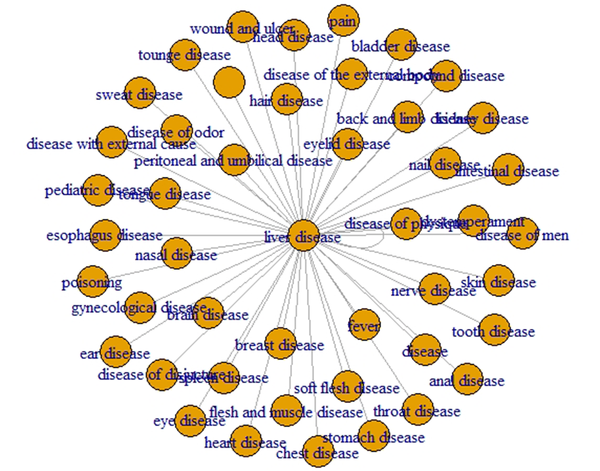Dear Editor,
The use of network science and graph drawing by making connections between different fields of medicine in the diagnosis and treatment of diseases called network medicine has received much attention in recent years. The relationship between various genes, pathways, and metabolites in different diseases can be determined using network science. It also identified several pathogenic causes and showed their relationship in different organs (1). The use of network medicine was first proposed by Barabási (2). In addition to the establishment of the link between a disease and various genes involved in the disease, Barabási identified the magnitude of these linkages and coined the term diseasome for the human-disease network connections (3). Currently, network medicine is widely used in the diagnosis of the causes, genes, metabolites, and pathways involved and in the next step in choosing the treatment of diseases.
More than 1000 years ago, the Persian physician Avicenna (980 - 1032) explained numerous concepts in the field of communication between organs with diseases and their causes. Although network communication between all organs is important, it is more significant in some organs due to the unique role they play in the life and survival of the individual, including the cardinal organs: the brain, heart, and liver. Therefore, from the perspective of Persian medicine, the liver plays an important role in metabolism and the whole body’s functioning (4-7).
Numerous network connections between the liver and other organs have been mentioned by the scholars of Iranian medicine, including Avicenna, which indicates that liver disorders can cause dysfunction, dystemperament, and disease in other organs of the body. The examination of this network at different levels shows that the causes of these disorders are related to each other. In other words, it can be said that a known material cause from the perspective of Iranian medicine can cause various diseases and disorders in multiple organs. The findings of conventional medicine also show the existence of common pathways, genes, and metabolites between liver diseases and disorders of other organs (8-12). Accordingly, the connections between liver diseases and other organs have been drawn based on the material causes of them from the perspective of Persian medicine. For this purpose, we used R software, which is a software and computer language for statistical data analysis and text mining and data mining capabilities that contain a wide range of statistical techniques that can be displayed with graphical capabilities.
In Figure 1, nodes are different organ diseases that are connected by edges, and the edges are common material causes of organs diseases.
In addition to the connections between the liver and other organs, there is a significant correlation between them. Because it is possible to identify the most involved organs based on the analysis of the aforementioned relationships, the magnitude of communication is very important in communication networks. For example, a stronger connection between the liver and an organ means more common causes of their diseases. Therefore, the occurrence of disease or dysfunction in the liver can indicate the occurrence of disease or disorder in those organs. This relationship will also occur in reverse. This is also more likely to occur in strong connections between the liver and some organs, such as the heart and brain (Appendix 1 in Supplementary File).
Appendix 1 shows the significance of the relationship between diseases of different organs and liver diseases based on the size and color. Accordingly, the liver is more closely linked to the brain, nervous system, heart and cardiovascular system, chest, and digestive tract. Fever is also significantly associated with liver disease. The connection mentioned in the sources of Persian medicine between the cardinal organs is confirmed by drawing this network. Moreover, in addition to using modern technologies that confirm and draw the points raised in the textbooks of Iranian medicine about the existence of a communication network between the liver and other organs through text mining methods, modern studies discover multiple axes, such as the liver-kidney axis (8), liver- brain axis (11), liver-heart axis (13), and liver-gut axis (9), confirming the theories put forward by Iranian scholars.
Although the scholars of Persian medicine more than a thousand years ago did not have access to any of today’s technologies, they enabled the researchers to currently understand the existence of this communication network based on their accurate observations. This relationship, which from their point of view is defined based on common material causes, is currently confirmed based on common genes, metabolites, and pathways.

